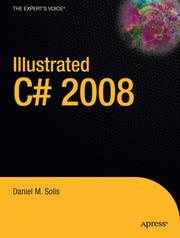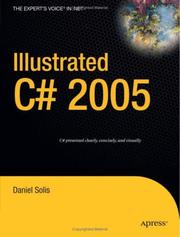| Listing 1 - 10 of 117 | << page >> |
Sort by
|
Multi
ISBN: 363130255X Year: 1996 Volume: 167 Publisher: Frankfurt am Main : Lang,
Abstract | Keywords | Export | Availability | Bookmark
 Loading...
Loading...Choose an application
- Reference Manager
- EndNote
- RefWorks (Direct export to RefWorks)
Psycholinguistics --- Langage [Psychologie du ] --- Langage et langues--Aspect psychologique --- Langage et langues--Psychologie --- Langage et psychanalyse --- Langage--Aspects psychologiques --- Langage--Psychologie --- Language and psychoanalysis --- Language--Psychological aspects --- Language--Psychology --- Langues--Psychologie --- Parole--Psychologie --- Perceptie --- Perception --- Psychanalyse et langage --- Psychoanalyse en taal --- Psychoanalysis and language --- Psycholinguistique --- Psychologie du langage --- Psychologie van de taal --- Taal en psychoanalyse --- Taal--Psychologie --- Taal--Psychologische aspecten --- Taalpsychologie --- Waarneming --- Bilingualism --- -Color --- -Perception --- Language, Psychology of --- Language and languages --- Psychology of language --- Speech --- Linguistics --- Psychology --- Thought and thinking --- Supraliminal perception --- Cognition --- Apperception --- Senses and sensation --- Chromatics --- Colour --- Chemistry --- Light --- Optics --- Colors --- Thermochromism --- Languages in contact --- Multilingualism --- Psychological aspects --- Color --- Color vision. --- Bilingualism. --- Diglossia (Linguistics). --- Deutsch --- Farbadjektiv --- Zweisprachigkeit --- Farbensehen
Multi
ISBN: 9781107015432 9781107695122 9781139058537 110701543X 1107695120 1107230233 1139058533 1139210068 1139215140 1139218239 1139221329 1139223038 1139224751 1280568879 9786613598479 9781139218238 9781139221320 661359847X 9781280568879 Year: 2012 Publisher: Cambridge ; New York : Cambridge University Press,
Abstract | Keywords | Export | Availability | Bookmark
 Loading...
Loading...Choose an application
- Reference Manager
- EndNote
- RefWorks (Direct export to RefWorks)
This book is about preferences, principally as they figure in economics. It also explores their uses in everyday language and action, how they are understood in psychology and how they figure in philosophical reflection on action and morality. The book clarifies and for the most part defends the way in which economists invoke preferences to explain, predict and assess behavior and outcomes. Hausman argues, however, that the predictions and explanations economists offer rely on theories of preference formation that are in need of further development, and he criticizes attempts to define welfare in terms of preferences and to define preferences in terms of choices or self-interest. The analysis clarifies the relations between rational choice theory and philosophical accounts of human action. The book also assembles the materials out of which models of preference formation and modification can be constructed, and it comments on how reason and emotion shape preferences.
Microeconomics --- Consumers' preferences --- Preferences (Philosophy) --- Value --- Rational choice theory --- AA / International- internationaal --- 305.6 --- 15 --- 339.320 --- Risicotheorie, speltheorie. Risicokapitaal. Beslissingsmodellen. --- Psychologie. --- Consumptie: algemeenheden. Wet van de vraag in verband met de consumptie. Consumptiebehoefte. Behoeftetheorie. --- Standard of value --- Cost --- Economics --- Exchange --- Wealth --- Prices --- Supply and demand --- Social choice --- Philosophy --- Brand preferences --- Choice (Economic theory) --- Choice of product --- Preferences, Consumers' --- Product choice --- Consumer behavior --- Consumers --- Revealed preference theory --- Psychologie --- Risicotheorie, speltheorie. Risicokapitaal. Beslissingsmodellen --- Consumptie: algemeenheden. Wet van de vraag in verband met de consumptie. Consumptiebehoefte. Behoeftetheorie --- Attitudes --- Business, Economy and Management --- Consumers' preferences. --- Value. --- Rational choice theory.

ISBN: 1281273686 9786611273682 1430205741 1590599543 9781281273680 9781430205746 Year: 2008 Publisher: Berkeley, Calif. : Apress,
Abstract | Keywords | Export | Availability | Bookmark
 Loading...
Loading...Choose an application
- Reference Manager
- EndNote
- RefWorks (Direct export to RefWorks)
The unique, visual format of Illustrated C# 2008 has been specially created by author and teacher of development methods, Daniel Solis. The concise text, use of tables to clarify language features, frequent figures and diagrams, as well as focused code samples all combine to create a unique approach that will help you understand and get to work with C# fast. It was while teaching numerous seminars on various programming languages that the author realized the immense power that diagrams have in explaining programming language concepts. Most people learn quicker and retain information better when the material is presented in a clean, simple, visual format. To achieve this result in his book, Solis uses concise text and bulleted lists, tables to clarify and summarize language features, as well as his renowned and ubiquitous figures and diagrams. Each language feature is illustrated with a concise and focused code sample for complete clarity. Following an overview of the .NET platform and the role played by C#, you'll soon move into exploring the C# language in its entirety, including all the new C# 2008 features right down to the most complex topics involved in C#. If you're a C++ or VB programmer migrating to C# 2008, this book will be invaluable; the unique visual approach offers a far from lightweight treatment of C# 2008, so even the most experienced programmers will come away with a deeper understanding of the C# language.
C# (Computer program language) --- Information Technology --- Computer Science (Hardware & Networks) --- General and Others --- Microsoft software. --- Microsoft .NET Framework. --- Software engineering. --- Microsoft and .NET. --- Software Engineering/Programming and Operating Systems. --- Computer software engineering --- Engineering --- Computer software --- Dot Net (Software framework) --- Microsoft .NET --- Microsoft .NET software framework --- .NET Framework

ISBN: 052187064X 9780521870641 9780511487965 9780521187381 9780511261503 0511261500 0511487967 0511259735 9780511259739 0511260938 9780511260933 9780511260384 0511260385 0521187389 1107171741 1280749482 0511320442 Year: 2007 Volume: 139 Publisher: Cambridge : Cambridge University Press,
Abstract | Keywords | Export | Availability | Bookmark
 Loading...
Loading...Choose an application
- Reference Manager
- EndNote
- RefWorks (Direct export to RefWorks)
In this 2006 text, Daniel M. Gurtner examines the meaning of the rending of the veil at the death of Jesus in Matthew 27:51a by considering the functions of the veil in the Old Testament and its symbolism in Second Temple and Rabbinic Judaism. Gurtner incorporates these elements into a compositional exegesis of the rending text in Matthew. He concludes that the rending of the veil is an apocalyptic assertion like the opening of heaven revealing, in part, end-time images drawn from Ezekiel 37. Moreover, when the veil is torn Matthew depicts the cessation of its function, articulating the atoning role of Christ's death which gives access to God not simply in the sense of entering the Holy of Holies (as in Hebrews), but in trademark Matthean Emmanuel Christology: 'God with us'. This underscores the significance of Jesus' atoning death in the first gospel.
Veil of the Temple (Jerusalem) --- Bible. --- Bible. N.T. Evangiles. Matthieu (anglais). 2007. Gurtner, D. --- 226.2 --- 225*5 --- Curtain of the Temple (Jerusalem) --- Inner Veil of the Temple (Jerusalem) --- Parokhet (Jerusalem) --- Temple Curtain (Jerusalem) --- Temple Veil (Jerusalem) --- Draperies --- Evangelie volgens Matteüs --- Laatste avondmaal. Proces van Jezus. Lijden. Kruisiging --- 225*5 Laatste avondmaal. Proces van Jezus. Lijden. Kruisiging --- Veils. --- Headgear --- Hijab (Islamic clothing) --- Bible --- Evangelie volgens Matteus --- Evangelie volgens Matthéüs --- Matʻae pogŭm --- Matai den --- Matai ni yoru fukuinsho --- Matius (Book of the New Testament) --- Mattá --- Matteo (Book of the New Testament) --- Matteus --- Matthäusevangelium --- Matthéüs --- Matthew (Book of the New Testament) --- Matthieu (Book of the New Testament) --- Criticism, interpretation, etc. --- Arts and Humanities --- Religion

ISBN: 9780674028050 0674028058 0674035216 0674039726 Year: 2008 Publisher: Cambridge, MA : Harvard University Press,
Abstract | Keywords | Export | Availability | Bookmark
 Loading...
Loading...Choose an application
- Reference Manager
- EndNote
- RefWorks (Direct export to RefWorks)
Measuring Up demystifies educational testing - from MCAS to SAT to WAIS. Bringing statistical terms down to earth, Koretz takes readers through the most fundamental issues that arise in educational testing and shows how they apply to some of the most controversial issues in education today, from high-stakes testing to special education.
Educational tests and measurements --- Test bias --- Tests et mesures en éducation --- Biais dans les tests --- Tests et mesures en éducation --- Bias in tests --- Prejudice in testing --- Discrimination in education --- Examinations --- Validity

ISBN: 1280865482 9786610865482 1430204354 1590597230 Year: 2006 Publisher: Berkeley, CA : Apress,
Abstract | Keywords | Export | Availability | Bookmark
 Loading...
Loading...Choose an application
- Reference Manager
- EndNote
- RefWorks (Direct export to RefWorks)
Illustrated C# 2005 doesnt use the traditional dense prose format of most programming texts. Rather, it presents the C# programming language in a unique visual manner. The book uses three techniques to achieve this: concise text, tables that clarify and summarize language features, and frequent figures and diagrams. Each feature is also illustrated with concise, focused code samples. The book starts with an overview of the .NET platform and the role played by C#, then quickly delves into the language. It covers the entire C# language, including new features added in C# 2.0 as well as the most complex topics. It's an ideal read if you're a migrating C++ or VB programmer who already knows how languages work. Despite its title, which might give the impression that it's a lightweight treatment of the language, this book is anything but. With its clean visual format, you'll be able to learn the material more quickly and retain it better than you would with a typical C# 2005 book. Even experienced programmers may come away from it with a deeper understanding of the language.
C# (Computer program language) --- Programming languages (Electronic computers) --- Computer languages --- Computer program languages --- Computer programming languages --- Machine language --- Computer science. --- Software engineering. --- Computer Science. --- Software Engineering/Programming and Operating Systems. --- Electronic data processing --- Languages, Artificial --- Microsoft software. --- Microsoft .NET Framework. --- Microsoft and .NET. --- Computer software engineering --- Engineering --- Computer software --- Dot Net (Software framework) --- Microsoft .NET --- Microsoft .NET software framework --- .NET Framework --- Information Technology --- Computer Science (Hardware & Networks)
Book
ISBN: 1430219106 9786612825453 1430219114 1282825453 9781282825451 9781430219118 Year: 2009 Publisher: [Berkeley, Calif.] : New York : Apress ; Distributed to the Book trade worldwide by Springer-Verlag,
Abstract | Keywords | Export | Availability | Bookmark
 Loading...
Loading...Choose an application
- Reference Manager
- EndNote
- RefWorks (Direct export to RefWorks)
Windows Presentation Foundation is Microsoft's API for creating Windows applications. It gives the programmer the ability to produce dazzling, graphics–rich programs easily without having to delve into the messy details of the graphics subsystem. To use this power, however, the programmer must learn new concepts for laying out pages and displaying graphics. Illustrated WPF presents these concepts clearly and visually—making them easier to understand and retain.
Application software. --- Microsoft .NET. --- Windows (Computer programs) - Standards. --- Windows presentation foundation. --- Application software --- Windows (Computer programs) --- Microsoft .NET Framework --- Computer Science --- Engineering & Applied Sciences --- Standards --- Information Technology --- Computer Science (Hardware & Networks) --- General and Others --- Standards. --- Windowing (Computer programs) --- Application computer programs --- Application computer software --- Applications software --- Apps (Computer software) --- WPF (Electronic resource) --- Computer science. --- Computer Science. --- Computer Science, general. --- Informatics --- Science --- Graphical user interfaces (Computer systems) --- Utilities (Computer programs) --- Computer software --- Microsoft software. --- Microsoft .NET Framework. --- Software engineering. --- Microsoft and .NET. --- Software Engineering/Programming and Operating Systems. --- Computer software engineering --- Engineering --- Dot Net (Software framework) --- Microsoft .NET --- Microsoft .NET software framework --- .NET Framework
Book
ISBN: 0124104525 012410407X 1306070732 9780124104525 9780124104075 9781306070737 9780124104075 Year: 2014 Publisher: Waltham, MA : Academic Press,
Abstract | Keywords | Export | Availability | Bookmark
 Loading...
Loading...Choose an application
- Reference Manager
- EndNote
- RefWorks (Direct export to RefWorks)
Calculus of Thought: Neuromorphic Logistic Regression in Cognitive Machines is a must-read for all scientists about a very simple computation method designed to simulate big-data neural processing. This book is inspired by the Calculus Ratiocinator idea of Gottfried Leibniz, which is that machine computation should be developed to simulate human cognitive processes, thus avoiding problematic subjective bias in analytic solutions to practical and scientific problems. The reduced error logistic regression (RELR) method is proposed as such a ""Calculus of Thought."" This book re
Cognitive science. --- Cognitive neuroscience. --- Logic machines. --- Artificial intelligence. --- Logistic regression analysis. --- Regression analysis --- AI (Artificial intelligence) --- Artificial thinking --- Electronic brains --- Intellectronics --- Intelligence, Artificial --- Intelligent machines --- Machine intelligence --- Thinking, Artificial --- Bionics --- Cognitive science --- Digital computer simulation --- Electronic data processing --- Logic machines --- Machine theory --- Self-organizing systems --- Simulation methods --- Fifth generation computers --- Neural computers --- Machines, Logic --- Logic --- Logic, Symbolic and mathematical --- Cognitive neuropsychology --- Neuropsychology --- Science --- Philosophy of mind --- Computational neuroscience. --- Mathematical models.
Book
ISBN: 3319271121 3319271148 Year: 2016 Publisher: Cham : Springer International Publishing : Imprint: Springer,
Abstract | Keywords | Export | Availability | Bookmark
 Loading...
Loading...Choose an application
- Reference Manager
- EndNote
- RefWorks (Direct export to RefWorks)
This book provides a concise, focused and clinically relevant summary of complications and emergencies related to bariatric surgery. The first section of the text addresses general complications related to anesthesia and the stress of surgery, including issues such as deep vein thrombosis, pulmonary embolism, hemorrhage, pneumonia and cardiac complications. Additionally, this section addresses the workup of the bariatric patient with abdominal pain. The second portion of the text focuses on gastric bypass and sleeve-specific complications, including staple line and anastomotic leaks, internal hernia, marginal ulceration, GI obstruction, hernia formation and gallstone disease. The third portion of the book examines metabolic, nutritional and psychological complications after bariatric surgery. The text also covers management of weight loss failure. Bariatric Surgery Complications and Emergencies serves as a very useful resource for physicians and surgeons who are involved in any parts of evaluation or management of bariatric patients suffering from postoperative complications or emergencies including bariatric surgeons who perform these operations on a regular basis, non-bariatric general surgeons who cover such patients when on-call, surgical trainees, and primary care physicians.
Surgery - General and By Type --- Surgery & Anesthesiology --- Health & Biological Sciences --- Obesity --- Surgery. --- Bariatric surgery --- Weight loss surgery --- Gastroenterology. --- Endocrinology. --- General Surgery. --- Internal medicine --- Hormones --- Digestive organs --- Surgery, Primitive --- Medicine --- Diseases --- Gastroenterology . --- Endocrinology .
Book
ISBN: 143023282X 1430232838 Year: 2010 Publisher: New York : Apress : Distributed to the book trade worldwide by Springer Science+Business Media,
Abstract | Keywords | Export | Availability | Bookmark
 Loading...
Loading...Choose an application
- Reference Manager
- EndNote
- RefWorks (Direct export to RefWorks)
This book presents the C# language in a uniquely succinct and visual format. Often in programming books, the information can be hidden in a vast sea of words. As a programmer who has over the years used a dozen programming languages, the author understands it can sometimes be difficult to slog through another 1,000-page book of dense text to learn a new language. There are likely many other programmers who feel the same way. To address this situation, this book explains C# using figures; short, focused code samples; and clear, concise explanations. Figures are of prime importance in this book. While teaching programming seminars, Daniel Solis found that he could almost watch the lightbulbs going on over the students’ heads as he drew the figures on the whiteboard. In this text, he has distilled each important concept into simple but accurate illustrations. The visual presentation of the content will give you an understanding of C# that’s not possible with text alone. For something as intricate and precise as a programming language, however, there must be text as well as figures. But rather than long, wordy explanations, Solis has used short, concise descriptions and bulleted lists to make each important piece of information visually distinct. By the end of this book, you’ll have a thorough working knowledge of all aspects of the C# language, whether you’re a novice programmer or a seasoned veteran of other languages. If you want a long, leisurely, verbose explanation of the language, this is not the book for you. But if you want a concise, thorough, visual presentation of C#, this is just what you’re looking for.
C# (Computer program language). --- Computer programming -- Software. --- Computer software. --- C# (Computer program language) --- Engineering & Applied Sciences --- Computer Science --- Information Technology --- Computer Science (Hardware & Networks) --- General and Others --- Microsoft .NET. --- Computer science. --- Computer Science. --- Computer Science, general. --- Informatics --- Science --- Microsoft software. --- Microsoft .NET Framework. --- Software engineering. --- Microsoft and .NET. --- Software Engineering/Programming and Operating Systems. --- Computer software engineering --- Engineering --- Computer software
| Listing 1 - 10 of 117 | << page >> |
Sort by
|

 Search
Search Feedback
Feedback About UniCat
About UniCat  Help
Help News
News